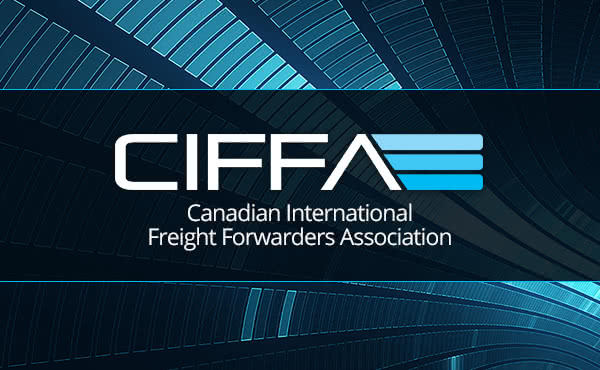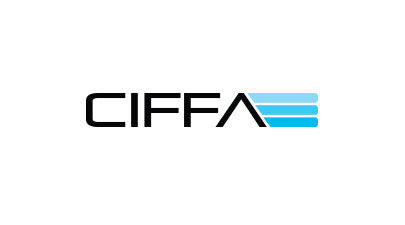CIFFA Exam Sample Questions & Answers – Payments- 2

CIFFA Exam Sample Questions & Answers – Payment – 2
- What are the main reasons why a letter of credit may be chosen as a form of International payment?
Open account unsatisfactory, documentary collection unsatisfactory, foreign exchange issue in the importer’s country, political/economic instability, exporter’s request and fair/equal sharing of risk.
- Name some advantages of a letter of credit.
- The exporter is assured of payment as long as he/she complies with the terms of the letter of credit;
- The letter of credit clearly defines the necessary documentation;
- Credit risk is transferred from importer to issuing bank;
- The exporter, with the help of a confirming bank, reduces the risk of non-payment;
- The exporter minimizes collection time with the use of the letter of credit; and
- The exporter’s foreign exchange risk is eliminated.
- The letter of credit deals with documents and not with goods, what risk does this pose to the buyer?
The risk of the exporter not shipping the goods as mentioned in the letter of credit still persists.
- What kind of risks is the exporter exposed to under the usance letter of credit?
The commercial risk of the issuing bank, political risk of the issuing bank’s country and foreign exchange risk.
- Name (5) five main parties involved in the letter of credit.
- The applicant (importer/buyer);
- The issuing bank;
- The beneficiary (exporter/seller); The advising bank; and The confirming bank.
- Which party instructs the bank to open a letter of credit?
The applicant (importer/buyer).
- Which party draws up and issues the letter of credit and then makes payment according to the conditions outlined in the letter of credit?
The issuing bank.
- Which party receives payment as stipulated in the letter of credit?
The beneficiary (exporter/seller).
- Does the advising bank take on any payment obligations to the beneficiary under a letter of credit?
No.
- What does the Uniform Customs and Practice for Documentary Credits (UCP) outline?
A set of rules on the issuance and use of letters of credit.
- What is the current version of the UCP rules used by commercial bankers and commercial parties in the execution of a letter of credit?
UCP 600.
- What is the bank’s responsibility under Article 5 of the UCP 600 rules?
Banks only deal in documents, not in goods.
- Is a CIFFA freight forwarder liable for his/her documentation in a letter of credit transaction?
A freight forwarder (as a member of CIFFA) is clearly liable for the accuracy of the documents supplied within the definition of the CIFFA Standard Trading Conditions (STCs), whereby in case of fraud (or gross negligence) the protection of the STCs does not apply.
- As a CIFFA freight forwarder, it is your responsibility to comply with the requirements of the letter of credit. What will the failure to do so result in?
The exporter will not get paid, the exporter depends on you to prepare at least the transport document without any fault.
- As a CIFFA freight forwarder, what is a good way to avoid any lack of attention or mistakes going through the documentary requirements?
Make a photocopy of the letter of credit and highlight the important or tricky portion of the credit – each clause once it has been completed and double-checked.
- The UCP 600 rules provide room for some interpretation. As a CIFFA freight forwarder, what should you do if you are in doubt?
Contact the bank immediately, as it is their interpretation of the rules that counts.
- What date do the banks look for if the credit prescribes an onboard bill of lading and the latest shipping date?
The actual on board or sailing date.
- Under the UCP 600 rules, which date do you use to present the documents to the paying bank?
You must present at whichever date comes first, presentation deadline or expiry (a presentation date can under no circumstances be later then the expiry date).
- If a bill of lading indicates a place of receipt different from the port of loading, what should be included in the “on board notation”?
The on board notation must include the name of the vessel, the voyage number and the port of loading.
- Under the UCP 600 rules, Article 23, is a house air waybill acceptable?
No. The house air waybill is not acceptable because it is not a carrier document
- Unless specified by name in the letter of credit, is a house bill of lading covered in the UCP 600 rules?
No. A house bill of lading is not a carrier’s document, it is signed by the freight forwarder as an agent for the shipper and consequently is not a contract of carriage.
- Is it possible to assign to another party all or part of the proceeds of a drawing/payment under a credit?
Yes, as per UCP 600, Article 39.
- As a CIFFA freight forwarder you should guard yourself against the risk of nonpayment. How can you ensure payment from your client?
By setting up a direct separate payment or credit schedule, depending on the financial status of your client, you may want advance payment or failing that, possibly abstain from handling a shipment.
- Name (3) three types of letter of credit.
- Transferable letter of credit;
- Revolving letter of credit;
- Standby letter of credit;
- Usance letter of credit;
- Red clause letter of credit.
- What is the difference between a revocable and irrevocable letter of credit?
If a letter of credit is revocable, the applicant has the right to modify or even cancel the credit at any time, up to the shipping date without the consent of the beneficiary. In the case of an irrevocable letter of credit one cannot annul, revoke, recall, cancel, amend, alter or change anything without the approval of the beneficiary or buyer.
- If there are spelling errors in the credit instructions, what should the CIFFA freight forwarder do?
There is no need to request an amendment, the forwarder merely writes within the documents the name misspelled as indicated in the letter of credit.
- Name some of the most common errors and/or deficiencies in the execution of a letter of credit.
Presentation after the expiry date, late bill of lading on board date, description differs, documents missing, consignee information incorrect and original credit missing.
- Using the diagram below, and the numbers assigned to each step, describe a typical letter of credit procedure.
1. A contract of the sale of goods is agreed upon between an importer and exporter. The contract finalizes, among other things, the amount and method of payment.
2. The importer, providing necessary detailed information, instructs a bank (the issuing bank) to issue a letter of credit in favour of the exporter. At this time the importer becomes the applicant.
3. The issuing bank transmits the credit to the exporter through a bank (the advising bank) in the exporting country. The issuing bank might ask the advising bank to add its confirmation to the credit (the confirming bank). At the time of acceptance of the letter of credit the exporter becomes the beneficiary.
4. The advising bank informs the beneficiary of the details of the letter of credit, who carefully checks the letter of credit for its requirements. The advising bank informs the issuing bank of the acceptance of the letter of credit by the beneficiary.
5. The beneficiary prepares the required documents and the shipment as called for in the credit and ships the goods to the importer.
6. The beneficiary presents the required documents to the negotiating bank.
7. The negotiating bank confirms that the documents fulfil the terms of the letter of credit, and if satisfactory, according to the terms, pays, accepts or negotiates payment.
8. The negotiating bank forwards the documents to the issuing bank.
9. The issuing bank confirms the fulfilment of the letter of credit, transfers the title to the applicant and makes reimbursement to the advising bank according to the terms of the credit.
10. The issuing bank debits or secures payment from the applicant in the manner agreed to prior to issuance of the letter of credit.
11. The issuing bank releases the documents to the applicant. The applicant uses the documents to take delivery of the goods.





